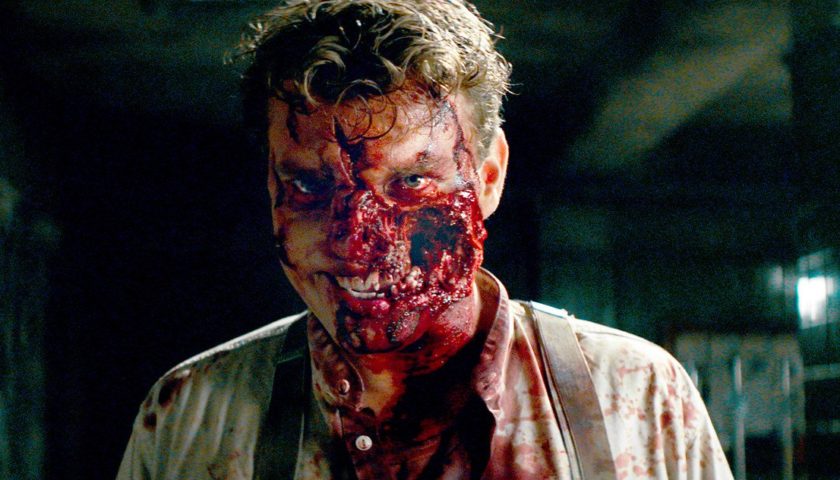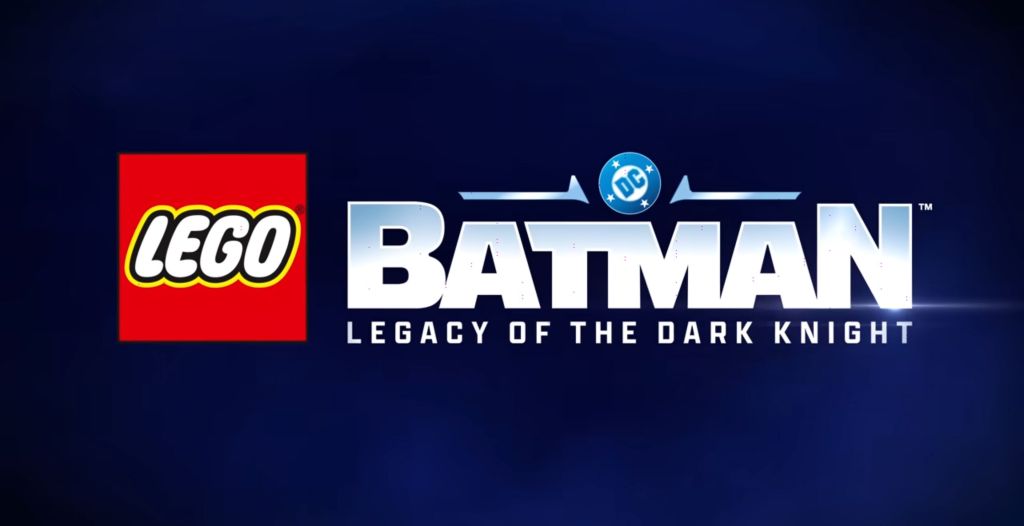In case you missed out on that feeling of having the last shreds of your attention handed to a 21st century video game, take in this Overlord scene:
World War II private Boyce (Jovan Adepo) is infiltrating his way through a Nazi base: a camera sticks to our protagonist’s back and shoulder as he navigates his way through a linear and bricked hallway (sound familiar?), ducking from from enemy field of views left and right. His eyes dart to eye-catching points of interest—evidence of zombie experimentation, areas of exit. Etc, etc. With his stealth mission over, he completes his mission and high tails it for another level, I mean, scene.
Videos by VICE
Overlord is not technically based on any video game you’ve ever heard of, but structurally, it feels like one. Since the earliest description dropped from JJ Abrams and team—a movie about American paratroopers attempting to penetrate the walls of a Nazi-fortified church of experimentation—there was an unmistakable resemblance to the long-running Wolfenstein series; the Nazi corridor mowdown-fest, history-to-zombie mash-up.
Like Wolfenstein, Overlord openly draws from classic old war themes—musical scores big on strings, set pieces huge on heartstrings, with an ending that concludes like an old-time epic of yesterday. Like Wolfenstein, it operates with an moral simplification of reality; our main guy is a black soldier in a 1940s war, but his skin colour isn’t acknowledged. (In Wolfenstein, the player is BJ Blazkowicz, an American of Jewish descent.) And like Wolfenstein, Overlord is the non-stop escapism from a news-cycle that would portray Nazis with tiki torches, instead of the rat-helmed-bastards they once looked alike.
Filmmakers have long been struggling to translate a video game into watchable cinema for decades, even cinematic games like Assassin’s Creed have been bungled, along with the expected failures of your Need for Speeds and Angry Birds. We’re talking about a subgenre led by the low-creative fuckery of Uwe Boll and other boring men without a respect for the medium. Somehow, Overlord—despite not technically having a thing to do with video games—gets it. It gets that a game movie isn’t a series of cut scenes spliced together in movie form; it’s the feeling being a part of something that can bridge the divide between the passive and participant like the following game specific examples:
Combat
Even the most storied type of a game series like Uncharted (Indiana Jones clone) gets tedious unless something—like murdering loads of henchmen—goes down every few minutes. It’s the nature of game pacing that’s narratively difficult to sustain. Movies like Overlord and The Raid subvert that by establishing plain-as-hell ground rules: it will all go down in a large divided area, it will look dope, and the action will differ by sequence (level). Through clever choreography, film can fix this translation by allowing action to feel out of this world to what’s essentially the same thing we’ve seen a thousand times; think your standard corridor shooter or fighter.

From the opening bits of Overlord, there’s an old-fashioned WWII ( Saving Private Ryan borrowed) catharsis, bundled with all the emotional exposition and character banter you’d commonly expect in this genre. But it all blends in a stew of visceral execution. The action is dynamic (long cuts from behind, in front, and away), before heading into bigger directions as the story advances; walking in as a WWII film, and departing in horror; with rare breaks in-between.
Boss Battles
Between the brilliant and brutal cinematic firecrackers that director George Miller tossed at us with Mad Max: Fury Road; most of the big moments amount to what we’d essentially call boss battles, (Immortan Joe / Rictus Erectus, etc).
What normally separates the common hero vs. evil tyrant scenario from the boss fight is the frequency of the encounters. They should feel stirringly intense, almost larger than life. The anticipation of that helps with the ebb and flow of a video game story; each new sequence presenting a new emotional chapter.

Overlord rolls on the basis of a stealth mission—four soldiers vs. an entire Nazi regime. This allows moments of intensity to come in pockets—the setup to a great boss battle: you know it’s coming, and the foreboding of that feels like forward momentum. In Overlord, it’s the hyperkinetic one-armed ghouls, Nazi generals, and Nazi-zombie super soldiers that decorate the latter half of this one hour and 50 minute ride. Compare that to the figurative boss battles in New Line Cinema’s Mortal Kombat—low budget, slow moving trash—and you see the problem.
Setpieces
I like to refer to my guy John Wick in this scenario, because it plays with a pristine routine. What you’ve basically got is a plot that functions on a revenge flick schtick—basic to the point of brainless—with a stupidly fast actioney gimmick that always looks clean. There’s a flair for movement here, down to the framing that slams audiences knee deep into stabbings and close-up gunshots that feel as intimate as player-to-game rhythm.
Contrast that with Overlord, which places audiences face first in every explosion, punch and blow of lead. In game design terms, a set piece feels like a planned sequence by scripted design, and it’s what we get plenty of through long tracking angles and shots; and the key to good set piece (especially within realm of gaming) comes in challenging the cleverness of the player—aka viewer—who think themselves as knowing how every damn sequence will go down. Movies that feel like video games make their moments into big, loud and unexpected pieces of art.
Plot
Just by nature of being an escape from reality, most video games—as the young male-driven cesspool that it is—treat reality with quasi-realistic insights. It dramatizes a Nazi takeover of America, like in Wolfenstein, without digging deep into Nazism as a whole. It presents a federal raid on a militaristic cult in rural America ( Far Cry 5), but it won’t say anything deep about current-day extremism and its core problems. Given the political climate we’re in, Overlord chooses to ignore certain statements about race and Nazism (by virtue of a black main character and war general), and opts for an alternative reality, where racism isn’t as problematic as old school definitions of villainy. Instead of going gung-ho “realistic” in an off-the-wall plot that doesn’t translate to scrutiny real-world film, Overlord works because the setup is uncomplicated and rests on the sell of the creepy, action-packed and unsettling.

It’s strange that a movie with no linkage to being a video game managed to understand what it takes to “feel” like a video game. Maybe if video game films stopped trying to be accepted as something they inherently aren’t, we just may get somewhere positive in the future.
Follow Noel Ransome on Twitter.
Sign up for the VICE Canada Newsletter to get the best of VICE Canada delivered to your inbox.
More
From VICE
-

Screenshot: Warner Bros. Games -

Tim Roney/Getty Images -

Screenshot: Ubisoft -

Screenshot: Rockstar Games
